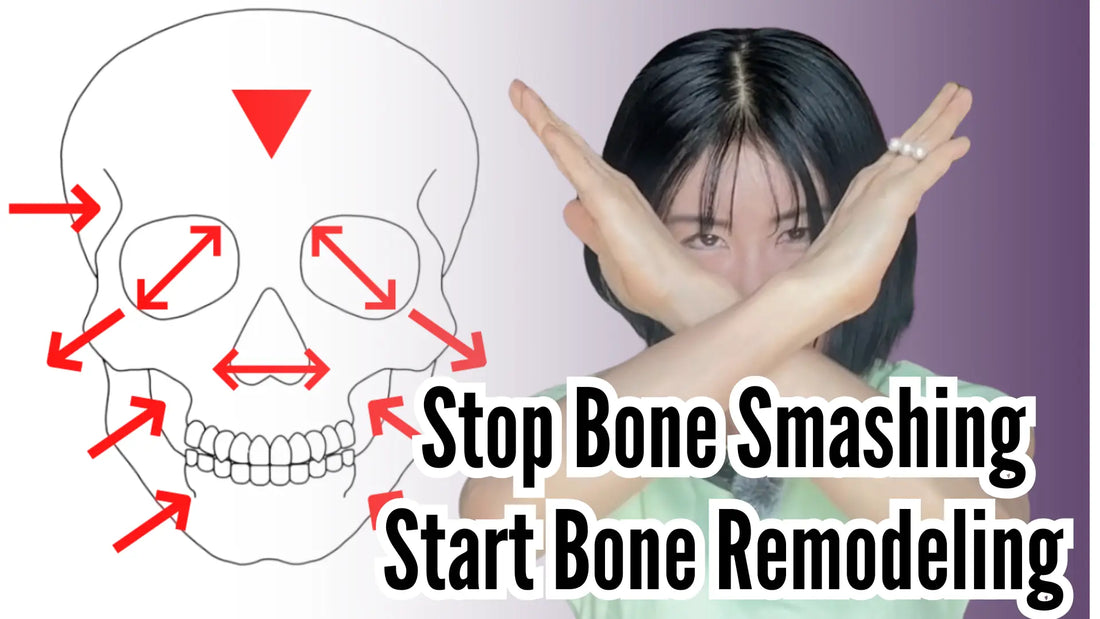Facial Osteoporosis
With age, body bones develop osteoporosis, especially at the onset of menopause for women. Facial bones experience the same, but in fact, facial osteoporosis starts as early as the 40s—before body osteoporosis. (The study by Walczak et al., 2023 says aging changes facial bone structures.)
For example, the forehead and temples sink in, eye sockets and nostrils become wider, cheekbones are pushed downward, and the jaw sinks in, which results in a bulldog face due to the leftover skin.
Bone Remodeling
Just like your skin renews itself at least every 28 days, your bones also go through a continuous process of renewal. Old bone tissue breaks down, and new bone forms in its place.
It’s slower than skin renewal, but over time, bone remodeling plays a huge role in how your face develops. And with the right habits, you can guide these changes in a healthy direction.
Why Focus on the Midface?
The maxilla (upper jaw) and cheekbones are key to your facial appearance. These areas are relatively responsive to gentle, steady pressure. With consistent practice, they can shift gradually over months and years. Some facial chiropractors say the maxilla is almost as soft as crab bone!
But here’s the truth:
- It takes at least six months of daily, focused practice.
- There are no shortcuts.
- Smashing or forcing will not speed things up.
- Patience is your best friend.
The Safer Alternative: Mewing
One of the most effective, natural techniques for guiding bone remodeling to lift up the midface is mewing tongue posture®. It’s not about force, it’s about correct position and consistency. Check my Mewing 101 video.
How to mew properly:
- Place the front third of your tongue gently against the roof of your mouth.
- Suction the rest of the tongue upward and slightly back.
- Keep lips closed and breathe through your nose.
Practicing this position regularly can:
- Support upward and forward growth of the midface
- Help shorten a long midface
- Create a more defined, youthful, and balanced look over time
Reference
Walczak, A., Krenz-Niedbała, M., & Łukasik, S. (2023). Insight into age-related changes of the human facial skeleton based on medieval European osteological collection. Scientific Reports, 13, Article 20564. https://doi.org/10.1038/s41598-023-47776-4

